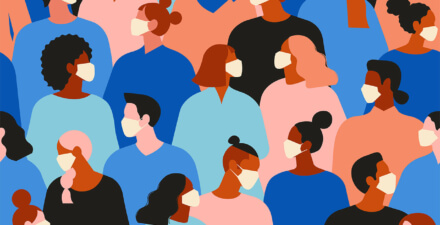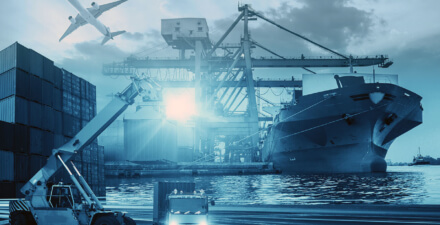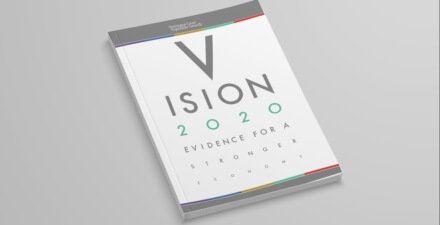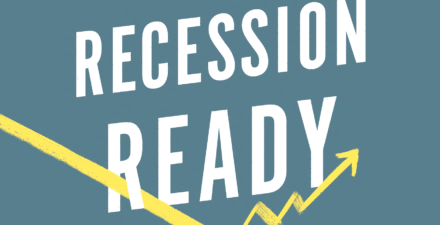Brad DeLong: Worthy reads on equitable growth, March 7-13, 2020
Worthy reads from Equitable Growth:
- Coronavirus special by Alix Gould-Werth, “The Only Thing Better than Strengthening Federal Social Supports Now to Prevent a Coronavirus Recession Is Strengthening Them Forever,” in which she writes: “Making sure that people affected by the coronavirus outbreak can be tested at minimal cost clearly makes good public health and economic sense. So do the other steps now being proposed in the House legislation. The current crisis also serves as a wake-up call for U.S. policymakers. Boosting unemployment insurance, strengthening food assistance programs, rolling out national policies on paid sick leave, and administering paid leave are all crucial to shoring up our public health system and economic infrastructure for the long term. In addition to the imperative for immediate emergency assistance, making these fixes permanent (and, in many cases, more expansive) would help us be prepared for whatever calamity comes next for the country or for any one of us individually.”
- Coronavirus economic impact by Heather Boushey, “How to Help Workers Laid Off in the Coronavirus Crisis,” in which she writes: “The coronavirus is first and foremost a public health crisis, requiring a public health response. It is also an economic problem, potentially a severe one. With increasing numbers of people in quarantine, millions of Americans avoiding certain kinds of businesses, the canceling of large gatherings, and investors obviously worried about the future, a coronavirus recession seems almost certain. Moreover, the historically high economic inequality that characterizes our economy has created fragilities that exacerbate any shocks to our society. The most urgent economic and health priority for Congress is to ensure that sick workers are able to stay home without fear of losing their jobs or their paychecks. Millions of workers lack access to paid sick days. Yet new research shows that paid sick days can reduce the transmission of flu by 40%. The workers least likely to have paid sick leave are low-income workers who may have a lot of contact with the public, such as deli workers and retail clerks, to name a few. If they’re only “a little” sick, they might go to work because they can’t afford not to, increasing the risk of infecting their fellow workers as well as customers. At the same time, they are also employed by businesses that are likely to feel the economic downturn immediately. The most straightforward way to provide sick pay is for Congress to require that all employers provide it to their employees—and the program needs to be permanent so we’re not scrambling the next time a catastrophe hits. This won’t help gig workers, but Congress can—as House Democrats have proposed—offer emergency extended leave to those who need it, paid for by the federal government, which will cover everyone. Beyond that, we need to take action to avoid or mitigate a painful recession. That job is made much harder by … high economic inequality.”
- A podcast on the coronavirus economic impact by Claudia Sahm, “Bloomberg Odd Lots: How To Stop The Recession from Happening Right Now.”
- And my coronavirus PowerPoint for my classes: “Coronavirus.”
Worthy reads not from Equitable Growth:
- Coronavirus Special: What we should have been doing, not just for the past three years, but for the past decade and a half. Read Adam Rogers, “Singapore Was Ready for COVID-19—Other Countries, Take Note,” in which he writes: “Singapore built a robust system for tracking and containing epidemics after SARS and H1N1 … This pandemic—the new disease COVID-19, the virus SARS-CoV-2—is not Singapore’s first epidemiological nightmare. In 2002 and 2003, Severe Acute Respiratory Syndrome, the original SARS, tore out of China and through Asia, killing 33 people in Singapore and sparking wholesale revisions to the city-state’s public health system. “They realized they wanted to invest for the future to reduce that economic cost if the same thing were to happen again,” says Martin Hibberd, an infectious disease researcher now at the London School of Hygiene and Tropical Medicine who worked in Singapore on SARS. So Singapore instituted new travel controls and health infrastructure. Then, in 2009, it got hit again—with H1N1 influenza, the so-called swine flu. “Pandemic flu came from Mexico, an Americas event, and Singapore tried to put in place in 2009 what they learned with SARS,” Hibberd says. “But flu was much more difficult to contain than SARS was, and they realized what they thought they’d learned didn’t work. It was another lesson.” When COVID-19 came around, Singapore was, it seems, ready … Singapore instituted strict travel controls and protocols for identifying sick individuals—to get them help as well as to find the people they’d been in contact with. The Singaporean government posted detailed accounting for how many people had been tested for the virus, and the locations and natures of those people’s social contacts. All these governments instituted strict social distancing measures, like canceling events, closing schools, and telling people to stay home. As a result (at least in part), all have lower numbers of infected people and lower fatalities than China or Italy, proportionately. They “flattened the curve,” as public health experts now say—lowering a probable spike of infections, perhaps pushing that surge of seriously ill people further out in time so that health care systems don’t get overburdened…. These places offer models for what to do next, laying out best practices for how to respond to the pandemic with fewer deaths, to get a case fatality rate closer to South Korea’s apparent 0.8 instead of Italy’s 6.6.” Detailed data can also tell epidemiologists what to expect about the dynamics of the disease, helping guide more targeted responses. “Highly detailed surveillance data will be critical for understanding the outbreak,” says Justin Lessler, an epidemiologist at the Johns Hopkins School of Public Health. “It is this sort of detailed analysis that will be critical for answering key questions about the role of asymptomatic people and children in transmission.”… Hong Kong, Japan, and Singapore all developed their own tests for COVID-19 as soon as the genetic sequences for the virus were published and ramped up production of the materials necessary for those tests. (That’s a sharp contrast with the US, which still doesn’t have enough tests for nationwide use, and may actually be running out of the materials necessary to make them.) Eah country instituted controls over immigration (a controversial move that the WHO recommended against, but that they did anyway). They rejiggered their national financial systems to make sure people didn’t have to pay for tests or treatment. (Easier in places where most health care is already nationalized, to be sure—and in some more progressive American states like California, Washington, and New York. In fact, New York Governor Andrew Cuomo even ordered paid sick leave for quarantined people and free hand sanitizer. Taiwan actually combined its national health care and immigration databases to generate automated alerts based on travelers’ potential for being infected … People in Singapore, for now, get information from multiple government websites, frequently updated, as well as from a government WhatsApp account. People get their temperatures taken before they can enter most buildings, including businesses, schools, gyms, and government agencies, because fever is one of the main symptoms of COVID-19. (According to my sister-in-law, whose family has lived in Singapore for six years, everyone whose temperature is normal gets a sticker, and people are expected to acquire two or three stickers every day.) Hibberd, who’s in Singapore now working on the new coronavirus, says, “On every lift I ride, there’s a notice saying what I have to do. Everywhere you walk there’s information… There’s a confidence in that information, in the government and what they’re saying, and there’s an expectation you should follow it.” The country gives a bit of money to people who don’t have the kinds of jobs that support being out of work—and fines people who don’t follow the rules.”







